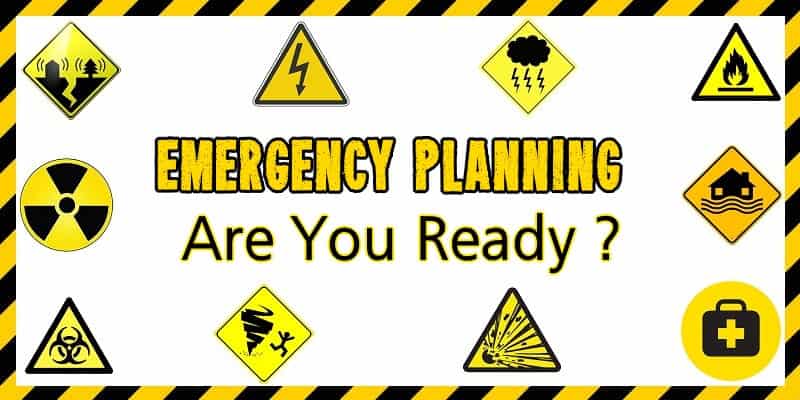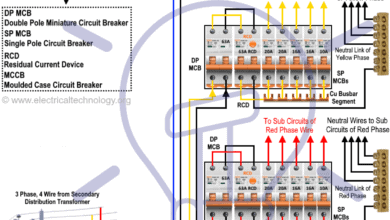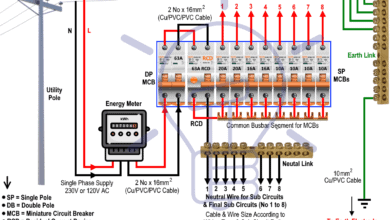Emergency Planning for Safety & Protection in Industries & Installations
Emergency Planning in Industries & Installations
Emergency Plan
Health and Safety organization and national regulations call for industrial and commercial companies and installations to have an emergency plan, to minimize the consequences of technological and natural hazards and to prevent possible disaster.
In addition an emergency plan promotes safety awareness and shows the organization’s commitment to the safety of workers.
The lack of an emergency plan could lead to severe losses such as multiple casualties and possible financial collapse of the organization.
Technological Hazards
Areas where flammables, explosives, or chemicals are used or stored should be considered as the most likely place for a technological hazard emergency to occur. Examples of these hazards are:
- Fire
- Explosion
- Building collapse
- Major structural failure
- Spills of flammable liquids
- Accidental release of toxic substances
- Exposure to ionizing radiation
- Loss of electrical power
- Loss of water supply
Natural Hazards
- Earthquakes
- Tornadoes
- Other severe wind storms,
- Snow or ice storms
- Severe extremes in temperature (cold or hot)
Related Post: Power Transformers Maintenance, Diagnostic & Monitoring
An emergency plan specifies procedures for handling sudden unexpected situations and the objectives of such a plan are to reduce the possible consequences of the emergency by:
- Preventing fatalities and injuries
- Reducing damage to buildings, stock, and equipment
- Accelerating the resumption of normal operations
- Decrease the potential impact to the environment, and to the community
The procedures to develop an emergency plan depend on:
- The degree of emergency
- The size of organization
- The capabilities of the organization in an emergency situation
- The immediacy of outside aid
- The physical layout
Emergency plans are subjected to a planning stage, several groups shall be asked to participate, such as joint occupational health and safety committee and municipal officials, and hazards must be identified and the impact of each of them must be itemized, such as:
- Sequential events (for example, fire after explosion)
- Evacuation
- Casualties
- Damage to plant infrastructure
- Loss of vital records/documents
- Damage to equipment
The events listed above will define the required actions and the location of resources needed.
- Related Post: Power Transformer Protection & Faults
Required Actions
- Declare emergency
- Sound the alert
- Evacuate danger zone
- Close main shutoffs
- Call for external aid
- Initiate rescue operations
- Attend to casualties
- Fire fighting
Resources Needed
- Medical supplies
- Auxiliary communication equipment
- Power generators
- Respirators
- Chemical and radiation detection equipment
- Mobile equipment
- Emergency protective clothing
- Firefighting equipment
- Ambulance
- Rescue equipment
- Trained personnel
Communication, training and periodic testing and revision will ensure adequate performance if the plan must be carried out.
An emergency plan must include the following items:
- All possible emergencies, consequences, required actions, written procedures, and the resources available
- Detailed lists of personnel including their home telephone numbers, their duties and responsibilities
- Floor plans
- Large scale maps showing the “meeting points”, evacuation routes, location of firefighting systems, alarm and panic buttons and service
Communications & Phone Numbers
When an accident occurs communication is vital to alert the internal teams in charge of security and external organizations that may be available to assist the fight against the hazardous occurrence and the rescue of personnel.
At strategic locations internal and external phone numbers of emergency teams and organizations must available.
Emergency phone numbers must include:
- National emergency number
- Fire departments
- Mobile rescue squads
- Ambulance services
- Police departments
- Telephone company
- Hospitals
- Utility companies
- Government agencies
Related Post: Primary and Secondary or Backup protection in a Power System
Panic Buttons
Panic buttons must be installed at strategic locations and are used as an emergency alarm to provide warning where someone is working and may need help or conditions reach an alarming state.
When a panic button is pressed an alarm will be sent and the alarm condition or status will continue until the panic button is manually reset.
Related Post: Cables Feeder Protection – Faults Types, Causes & Differential Protection
Electrical Fires & Fire Fighting
Classification of fires is important in order to define the firefighting methods to be used and the most appropriate extinguishing agent. The table below shows the most common classes of fires.
In Europe this classification is made in accordance with EN (European Standards) Standard 2:1992 and in America according to NFPA (National Fire Protection Association) standards.
There are four elements needed to start and sustain a fire and/or flame. These elements are:
- Reducing agent (fuel)
- Heat
- Self-sustained chemical chain reaction
- Oxidizing agent (oxygen)
In industry the most common causes for fire are electricity and chemical products, like gasoline and fuel oil.
Electrical fires are fires involving potentially energized electrical equipment. This sort of fire may be caused by short-circuiting machinery or overloaded electrical cables. These fires can be a severe hazard to firefighters using water or other conductive agents: Electricity may be conducted from the fire, through water, the firefighter’s body, and then earth. Electrical shocks have caused many firefighter deaths.
Electrical fire may be fought in the same way as an ordinary combustible fire, but water, foam, and other conductive agents are not to be used. While the fire is or possibly could be electrically energized, it can be fought with any extinguishing agent rated for electrical fire. Carbon dioxide (CO2) and dry chemical powder extinguishers such as ABC powder are especially suited to extinguishing this sort of fire.
However for power transformers is usual to use “pulverized water” to fight the fire.
Chemical fires are normally extinguished using sprinkler systems, CO2 and dry chemical power.
- Related Post: Overhead Lines Protection – Faults & Protection Devices
National Fire Protection Association (NFPA) Standards
NFPA standards are the most important standards in what concerns firefighting. The more relevant standards are listed below:
- NFPA 1 – Fire Code
- NFPA 10 – Standard for Portable Fire Extinguishers
- NFPA 11 – Standard for Low, Medium, and High-Expansion Foam
- NFPA 12 – Standard on Carbon Dioxide Extinguishing Systems
- NFPA 13 – Standard for the Installation of Sprinkler Systems
- NFPA 15 – Standard for Water Spray Fixed Systems for Fire Protection
- NFPA 17- Standard for Dry Chemical Extinguishing Systems
- NFPA 30 – Flammable and Combustible Liquids Code
- NFPA 901: Standard Classifications for Incident Reporting and Fire Protection Data
Related Read: Power Transformer Protection & Faults







